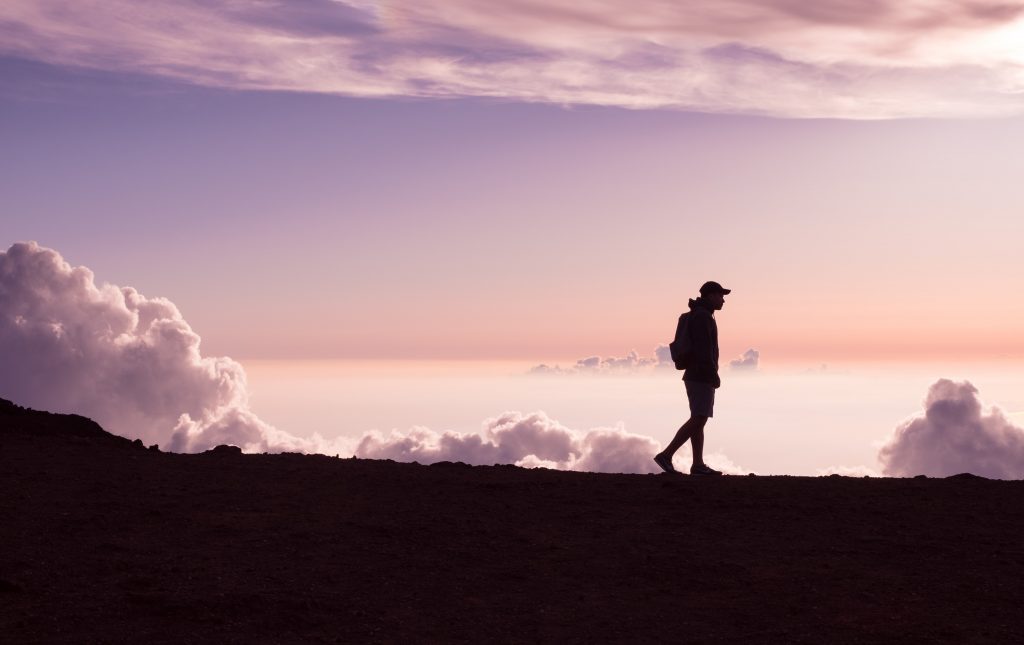Longitude Sound Bytes
Ep 09: Time to go for a walk! | Carrie Ott-Holland – by Shvetali Thatte (Listen)

Carrie Ott-Holland, manager of performance design research at Google, San Francisco:
Hi, my name is Carrie Ott Holland. I live in Oakland, California, and I currently work at Google where I manage a team of researchers that are working to redesign performance management and promotion processes. And today, I am going to be talking to you about creativity and ways that I have cultivated creativity in my career.
As a young adult, I was very passionate about classical music. I studied it very intensely, I went to a performing arts high school, and then studied music in college. And I feel like that experience of growing up like that taught me a paradoxical lesson about creativity which is that being creative requires you to be a very boring person for a very very long time. So I’ll give you a couple of examples of what I mean.
Being creative involves in my experience sticking to a routine. It involves developing a strong foundation of craftsmanship for whatever area that you are in. It requires you to sit with people’s work that gets you excited, that you like, and get incredibly analytical about disecting what it is you like about that and being able to be able to pull that out so can you draw from that in your own creative work. It also requires you to get lots of feedback from people but also spending the time to sit with that, particularly the feedback that you don’t agree with, and understanding where it comes from and thinking through how you can respond to that feedback.
So, after college I went to do my Phd in organizational psychology. And in graduate school, I was suddenly expected to have all these good ideas about what I was going to do for my thesis or what we should do for a paper and I felt like the expectations were so high and I was constantly getting feedback from the faculty that just felt like criticism and it often left me feeling inadequate.
After several semesters of spending time in coffee shops, hours and hours, reading articles and writing bad papers and getting all this feedback and spending time, I started to find a creative place for myself. And by that, I mean I started to feel like I had tools in my tool belt and I could pick and choose which ones I wanted to apply in which situations. I also got comfortable with the idea of writing down my thoughts and writing down a plan and discussing it with a friend or advisor and then maybe, afterwards, determining that it was terrible and throwing all that work away. And realizing that is part of the process.
The last thing I want to tell you about, because I studied organizational psychology and am an organization psychologist, I do want to share a little bit about the field of creativity. I’ll share with you a study that personally resonates with me.
The thing about research in creativity is it is notoriously difficult to study. Just trying to determine what creativity looks like in the workplace, much less what contributes to creativity, is enormously challenging and has been many careers worth of work. The study I most like in the field of creativity has to do with going for walks. There were two Stanford researchers, I want to say this was probably 6 or 7 years ago, who had people generate ideas as part of their studies, but before they generated their ideas, they had some of them walk on a treadmill, had some go outside for a walk, and others had to sit at their lab, outside, or at a desk. After doing this for a bit, they were given a prompt and had to generate as many ideas as they possibly could. And the people who walked outside, and even the people who sat outside, tended to do better than those who were inside. And the people who walked versus the people who sat tended to have better ideas. And by better, I mean they had a greater volume of creative ideas and more novel ideas. And I personally have found that although I do need to spend the time digging into the problem space and getting through all the details, being in the weeds, what is most helpful for unlocking the solution is, after all that, going and taking a walk.Getting outside, talking to someone about what I’ve been thinking about, maybe not thinking about the thing at all, and just letting it come back to my mind because eventually, that solution will pop.
So, those are some of my thoughts on creativity. Thank you so much for listening, and wish you well.

Shvetali Thatte, Longitude fellow, Case Western Reserve University, Cleveland:
Thank you, Carrie, for sharing such amazing insights from your career path.
Growing up I had this notion that creativity was almost spontaneous and you either had it or you didn’t. But similar to what you said as I broadened my perspective by speaking with different adults, mentors and peers, I learned that creativity is cultivated when you learn to combine the knowledge you have in new ways. The study that you brought up was extremely interesting, and it is actually something I have noticed in myself. In high school my favorite place to go when I was stressed was the parking lot, where I would walk along the curve and just think. Sometimes about the pressing issues on my brain but other times I was just daydreaming. The movement and fresh air helped me focus on something other than what was going on in my head, helping me get out of my head and a lot of new thoughts to subconsciously enter that I could later deliberate on. I didn’t stop myself from thinking about something that was maybe possible maybe it wasn’t I just let the ideas flow through me.
We hope you enjoyed todays segment. Please feel free to share your thoughts over social media and in the comments, or write to us at podcast@longitude.site. We would love to hear from you.
Join us next time for more unique insights on Longitude Sound Bytes.

